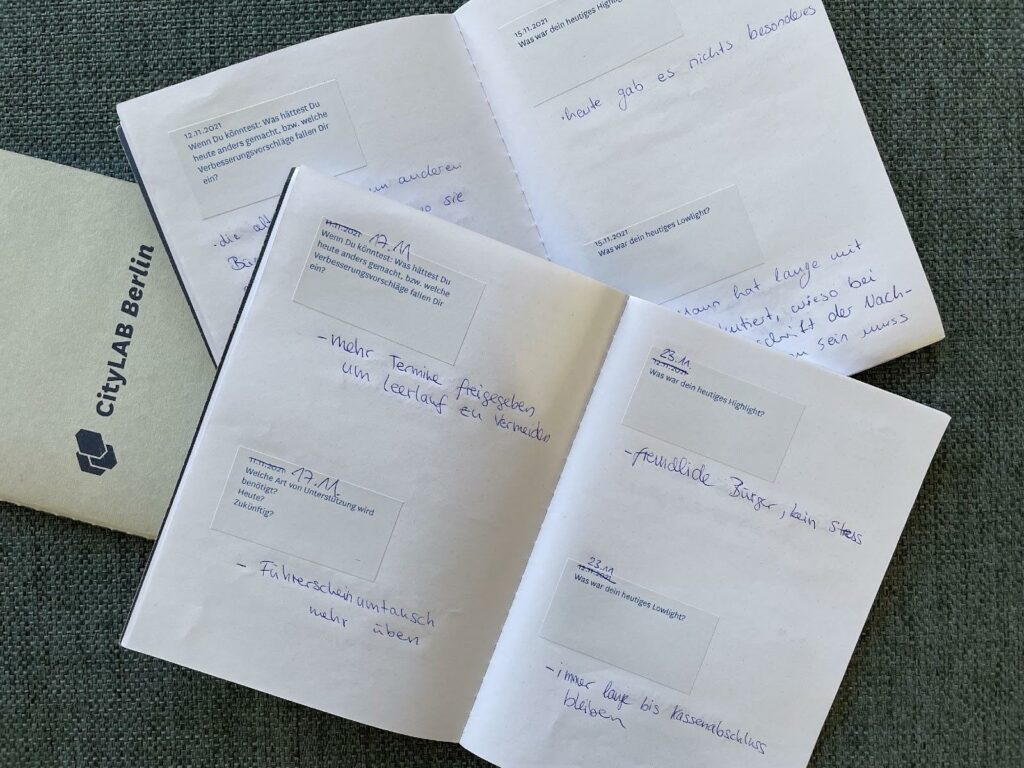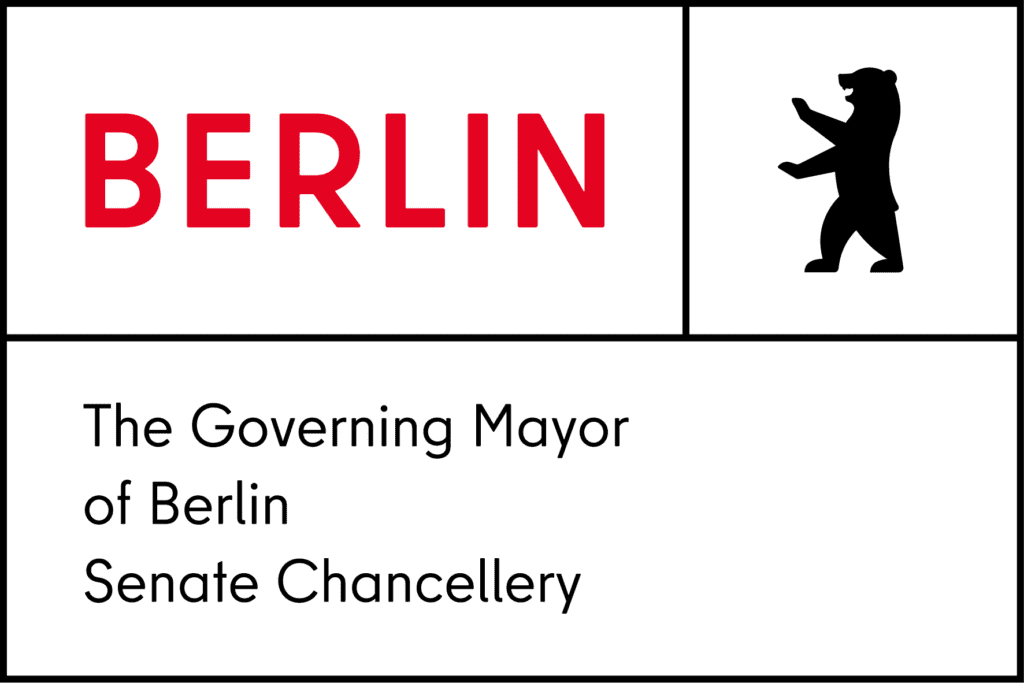The Bürgeramt of the Future – Part 1
How can Berliners get appointments at Bürgerämter – “citizen offices” – more quickly than is currently possible? What would a work station at a Bürgeramt of the future look like? Which workflows at the Bürgeramt for city employees in training could be optimized so as to get closer to achieving the 14-day target – i.e., ensuring that individuals seeking an appointment at a Bürgeramt are able to get one within 14 days?
We launched the project Bürgeramt der Zukunft (‘Citizen Center of the Future’) to find out what employees and trainees at the Friedrichshain-Kreuzberg Bürgeramt for city employees in training (Ausbildungsbürgeramt) experience during their day-to-day routine: what everyday challenges do they face, and what aspects of their daily routine work well, and which ones not so well? Drawing on service design methods, we wanted to find out about the working atmosphere and work processes, and by shadowing trainees on their appointments, we set out to record how Berliners experienced their time at the Bürgeramt. To do this, we conducted a diary study then set up a shadowing program.
The aim of Bürgeramt der Zukunft and the subsequent monitoring of employees was to get to know the conditions, structures and processes on location using open-ended methods with a goal of identifying potential starting points for future projects and generating suggestions for possible improvements. The project as a whole passed through four distinct phases, and here we’d like to present the first two: The diary study and the shadowing program.

First phase: Dear diary
The first part of the project consisted of assigning both trainees and full employees at the Bürgeramt training center diaries, which were pre-filled with questions for them to answer every day for six weeks. The goal of the diaries was to invite participants to put their everyday observations in writing – positive and negative events, aspects of their daily routines, any noteworthy occurrences, etc. The participants were comprised of six trainees, one intern, and one trainer.
We transferred the content of the diaries to a table and created a summary of them on a Miro board. This allowed us to first sort the points by topic, then establish categories, and finally identify salient issues and spotlights. So what insights were we able to gain? We found that information on citizen services needs to be made more accessible, in particular for people whose native language is not German, as well as for those who have difficulty grasping more complex texts.

Second phase: Shadowing for a good cause
Based on the issues identified, we came to an agreement on the nature of our observations and decided on the questions we wanted to ask in our next step. In the first part of the shadowing session, we accompanied and observed employees’ activities. This gave us insights into employees’ work and methods without interfering in their actual day-to-day work. We wanted to find out if there were less-visible processes that were actually quite critical, what concerns citizens have about digital processes (for example, providing fingerprints, using online ID functions, or submitting digital applications, etc.), how effective or ineffective the workflows in the Bürgeramt are, and what other noteworthy experiences citizens and employees are having at the Bürgeramt outside of the standard services provided.
In the second part of the shadowing program, we interviewed citizens visting the Bürgeramt for the purpose of accessing a citizen service (like registering your address) and asked them about their expectations for their visit. Among other things, the aim was to find out how satisfied they were with the service, whether they could imagine it being offered online, and why they chose to visit the Bürgeramt in person rather than complete the given citizen service online (to the extent that that service was available online to begin with). Afterwards, we recorded our observations and held brief discussions with both employees and citizens.
Based on the results of the shadowing sessions, we were able to identify insights and determine where there was concrete potential for improvement. We have collected some of these insights here:
One particularly important point is the need for flexible scheduling and a more effective flow of information between employees and citizens during the work processes. It would also be helpful to have an easier way to cancel appointments – this would greatly simplify a lot of processes. Often there is a loud background noise in the work rooms caused by printer noise at the various workstations where there are consultations going on at the same time, so restructuring of the work rooms could lead to an improved experience for employees and citizens alike. The waiting areas often appear sterile, cold and aesthetically unappealing, leading to a desire for an information counter where citizens can speak to employees directly. Online services are currently only used by very few citizens – the majority of people still go to the citizen center in person to obtain services on site, even if these services are available online. Why does this happen? One reason is that many people want to be able to communicate directly with another person; an easier-to-understand online form (so that citizens don’t feel like they need the help of an employee to fill it out) could help here.
So how do we, the CityLAB, envision the Bürgeramt of the future? We derived the following definition from the first two phases and have written it down to help guide our work in the future:
“The Bürgeramt 2025”
Berliners are able to access desired citizen services within 14 days and have their concerns addressed with a high level of customer service. Both Berliners and city employees benefit from digital services and modern IT support during their interaction with the Bürgeramt. People leave the Bürgeramt with a smile on their face.
The two methods of diary study and shadowing clearly demonstrated that a detailed view of the present is the best preparation for the future. In phases three and four in the coming weeks, theoretical findings will be turned into practical projects.
Find out how the journey is set to continue in part 2 of this post!
